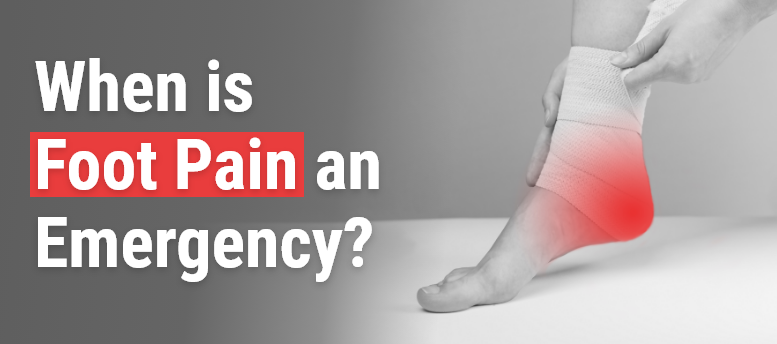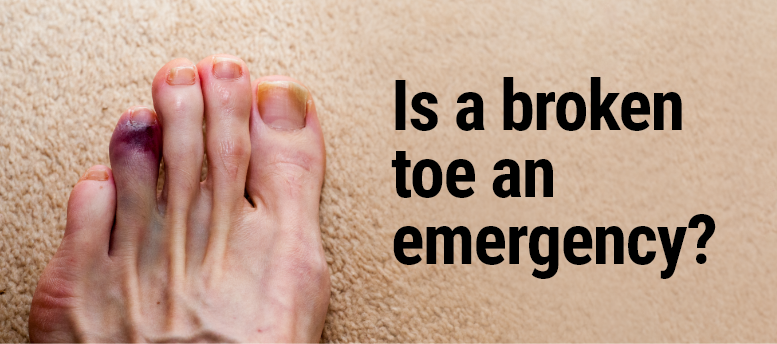Experiencing a fractured foot can be a painful and distressing event. Understanding the treatment process for such an injury is crucial, whether you’re the one suffering, caring for someone with a fracture, or simply eager to learn. In the blog below, we will guide you through the journey of fractured foot treatment, from the moment of injury to the final steps of recovery.
Initial Diagnosis and Meeting an Emergency Foot Doctor
The journey begins with the diagnosis. If you suspect a fractured foot, the first step is to seek immediate medical attention from an emergency foot doctor or seek urgent care for broken bones in feet. The medical professional will typically start with a physical examination of the foot, checking for swelling, bruising, and tenderness. This is often followed by an imaging test, such as an X-ray, to confirm the fracture and assess its severity.
Understanding the Type of Fracture
Fractures can vary significantly in complexity. Some might be simple, with the bone pieces aligned and stable. Others can be displaced, involving bone fragments that have shifted. Comminuted fractures, where the bone is shattered into several pieces, are more complex. The type of fracture you have will significantly influence your treatment plan.
Cast Immobilization and Other Treatment Methods
For most foot fractures, cast immobilization is a common treatment approach. The cast helps to keep the bones in the proper position while they heal. In more severe cases, such as a displaced or comminuted fracture, surgery might be required to realign the bones properly. In these instances, metal plates, screws, or pins may be used to maintain proper alignment during healing.
The Role of Rest and Elevation
During fractured foot treatment, rest is crucial. Keeping weight off the injured foot is essential to prevent further injury and aid in the healing process. Elevating the foot above heart level can help reduce swelling and pain.
Physical Therapy and Rehabilitation
Once the bone starts to heal, physical therapy often becomes a part of the treatment plan. A physical therapist will guide you through exercises to restore strength, flexibility, and range of motion. This phase is crucial for regaining foot function and preventing stiffness or long-term mobility issues.
Follow-up Appointments and Monitoring Progress
Regular follow-up appointments with your doctor are vital to monitor the healing process. These check-ups typically involve physical examinations and, occasionally, new X-rays to assess how well the bone is healing. Based on these assessments, your doctor will adjust your treatment plan as needed.
Navigating the Emotional Impact
It’s important to acknowledge the emotional impact of a foot fracture. The sudden loss of mobility can be frustrating and challenging. Seeking support from friends, family, or a counselor can be beneficial during this time.
Conclusion
Fractured foot treatment is a journey that requires patience, careful attention, and often a multidisciplinary approach involving emergency foot doctors, surgeons, and physical therapists. Understanding the steps involved in the treatment can help patients and caregivers prepare for what lies ahead, ensuring a smoother and more informed recovery process. Remember, every fracture is unique, and so is every healing journey. Trust in your medical team, adhere to their advice, and keep a positive outlook for the best possible outcome.
Toe and forefoot fractures, often caused by direct impacts, overuse injuries, or repetitive stress from activities like running or basketball, are common occurrences. Managing the pain from these fractures is crucial, and they require immediate medical attention rather than being disregarded. Rest and a change in physical activities usually aid in healing, but professional medical attention is essential, especially if the fracture is displaced or dislocated, to avoid long-term damage. Urgent Care for Feet can provide the necessary care, using X-rays to determine the severity and exact location of the injury and guide the healing process. Early intervention is key to preventing permanent damage and ensuring optimal recovery. It’s important to not underestimate the impact of a broken toe, as timely and professional medical care is critical for a swift and safe return to regular activities, with surgery being considered as the last option. Contact us today to learn more.




